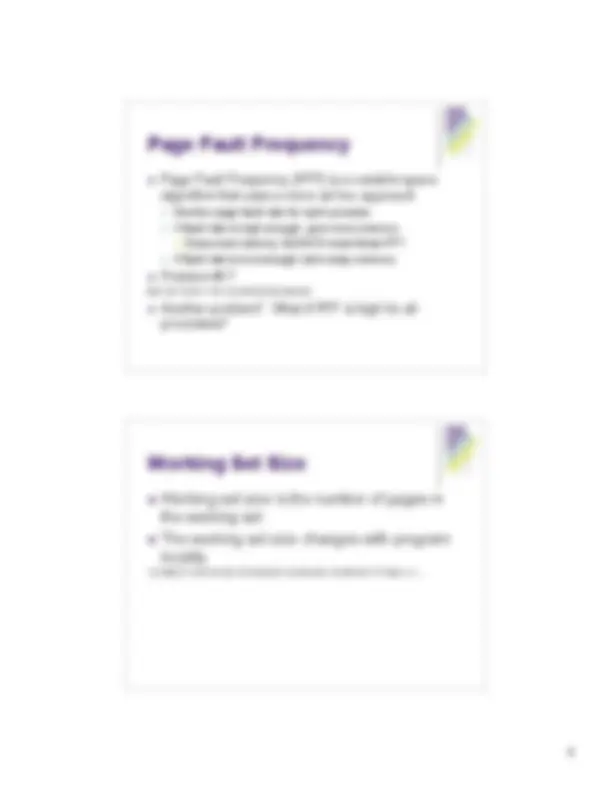






Study with the several resources on Docsity

Earn points by helping other students or get them with a premium plan


Prepare for your exams
Study with the several resources on Docsity

Earn points to download
Earn points by helping other students or get them with a premium plan
Community
Ask the community for help and clear up your study doubts
Discover the best universities in your country according to Docsity users
Free resources
Download our free guides on studying techniques, anxiety management strategies, and thesis advice from Docsity tutors
Lecture notes for comp 310: operating systems, lecture 19, covering topics such as virtual memory, physical memory, page replacement algorithms, working set model, page fault frequency, thrashing, and nachos project 2. The lecture focuses on the allocation of frames, working set problems, and determining the sufficient number of frames for each process.
Typology: Study Guides, Projects, Research
1 / 8

This page cannot be seen from the preview
Don't miss anything!





What addresses do programs use? What addresses does the system need? How do we convert between the two?
Allocation of Frames Fixed vs. Variable Space Kernel space P P P Physical Memory Thrashing When most of the time is spent paging data back and forth from disk (OS is a process too and needs the CPU to run…) Page replacement algorithms avoid this Also must allocate sufficient frames to each process How do we know what’s sufficient?
Page Fault Frequency Page Fault Frequency (PFF) is a variable space algorithm that uses a more ad hoc approach Monitor page fault rate for each process If fault rate is high enough, give more memory Does more memory ALWAYS mean fewer PF? If fault rate is low enough, take away memory Problem #1? 0 0 1 0 1 2 0 1 1 0 1 2 3 4 5 3 3 5 4 4 3 3 Another problem? What if PFF is high for all processes? Working Set Size Working set size is the number of pages in the working set The working set size changes with program locality 1 2 4 0 2 1 2 4 7 3 3 2 7 3 3 4 3 3 1 3 3 3 3 3 1 3 3 6 3 7 7 7 0 0 1 1…
Thrashing Revisited But sometimes physical memory is just not big enough E.g. Windows 95 with 4MB of memory Solutions? Memory management review We may have a VM that is larger than the PM When a program accesses a page that is not in PM, a ______________ occurs. Then what happens? A _______________ specifies which page to replace in physical memory (We looked at several) Finally, we must decide how allocate frames to processes. If we allocate too few ___________ will occur
Nachos Worksheet From UCSD version of this class VERY HELPFUL Pair up and work on it. Work with someone OTHER THAN your partner for the project Next time and Announcements I will be gone Thursday through next Wednesday Office hours next week moved from Monday and Tuesday to Thursday and Friday Next time: begin File Systems Read Chapter 11
7 0 1 2 0 3 0 4 2 3 0 3 2 1 2 0 1 7 0 1